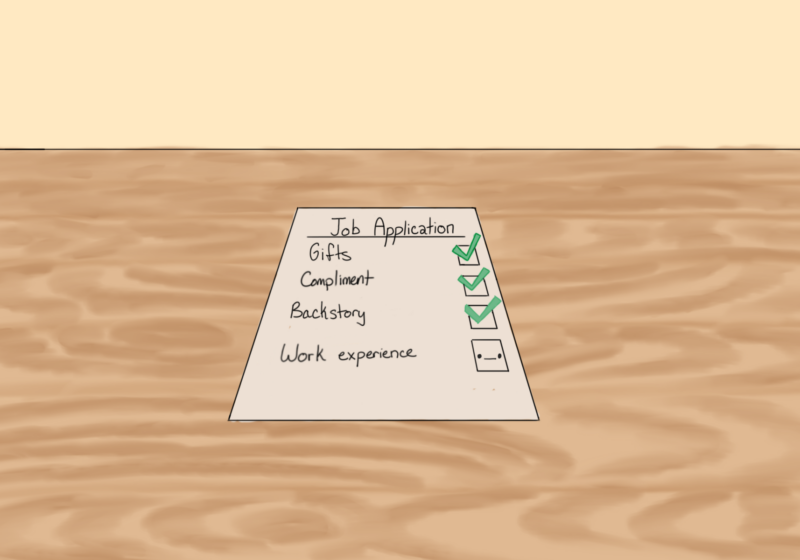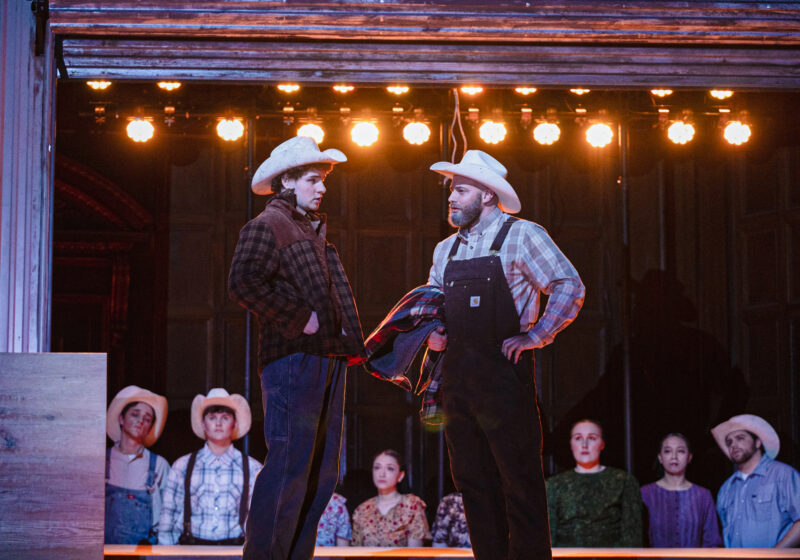As I lay motionless on the floor of the dance studio, my mind was still running around Rochester. With eyes closed, I heard Nancy’s voice telling me to imagine the mass of the Earth, then my own mass. But ironically, I was infatuated with the gravity of my own lack of focus.
I kept thinking about the math test I’d taken on Thursday, the bullshit reporting I had to do for my internship and how I was going to start this story.
The workshop progressed and I found myself sitting back to back with someone I’d never met before that morning. I could feel my partner behind me as we gently swayed side to side. As the rocking intensified, I had a moment of realization. I became aware of how my thoughts had been tempered from the formless anxiety of my outside life to the precision of a single point of mutual contact.
“I think there’s something in the nature of the form that requires you to be present,” Nancy later said to me.
When I asked Nancy about her teaching methodology she explained, “In a way it’s a little bit like making a meal, you have certain things you know how to cook and certain ingredients and some factors that are very particular to a given day.”
She continued, “As a teacher, sometimes I have to let go of the idea that a given class has to be like the perfect, complete meal and allow us to just to work together and share what we can and let that add to the body of knowledge that we have.”
Contact improvisation is a form of dance that places no physical demands on its performers. However, its practice usually involves two individuals improvising a dance centered on a changing point of common contact. And the instructions serve only as suggestions.
In this sense, Nancy Stark Smith is one of its most respected guides. She worked closely with Steve Paxton, the originator of the form, during the early 70s when contact was first developed.
Through the past 20 years, Nancy has been integral in advocating the form in all respects. Today, she travels around the world, teaching and performing with musician Mike Vargas.
Nancy came to UR to perform and to also teach a workshop for 20 or so students from the contact improvisation class at the university and a few dancers from the community.
She continues her work today, “because it makes me feel more alive, more alert and more motivated to be present and to enjoy life and to be curious about things,” she said. And I could say the same thing about both her and contact improvisation.
The second day of workshop transitioned into a jam, a forum for the practice of contact, and I found myself feeling more creative.
Through my dances, I realized something about what I’ve been taught in contact the past two years and what Nancy showed me that weekend. The rolls, handstands, lifts and strategies that I had been shown so I could practice the form safely – I disregarded them. On Saturday, I broke the rules that I made for myself.
Whatever had been holding me back subsided and eventually led me to dance with Nancy. Whether I was restricted by my lack of concentration, the intimidation of her presence or some combination of both, my last dance was with Nancy Stark Smith.
Rudolph can be reached at drudolph@campustimes.org



